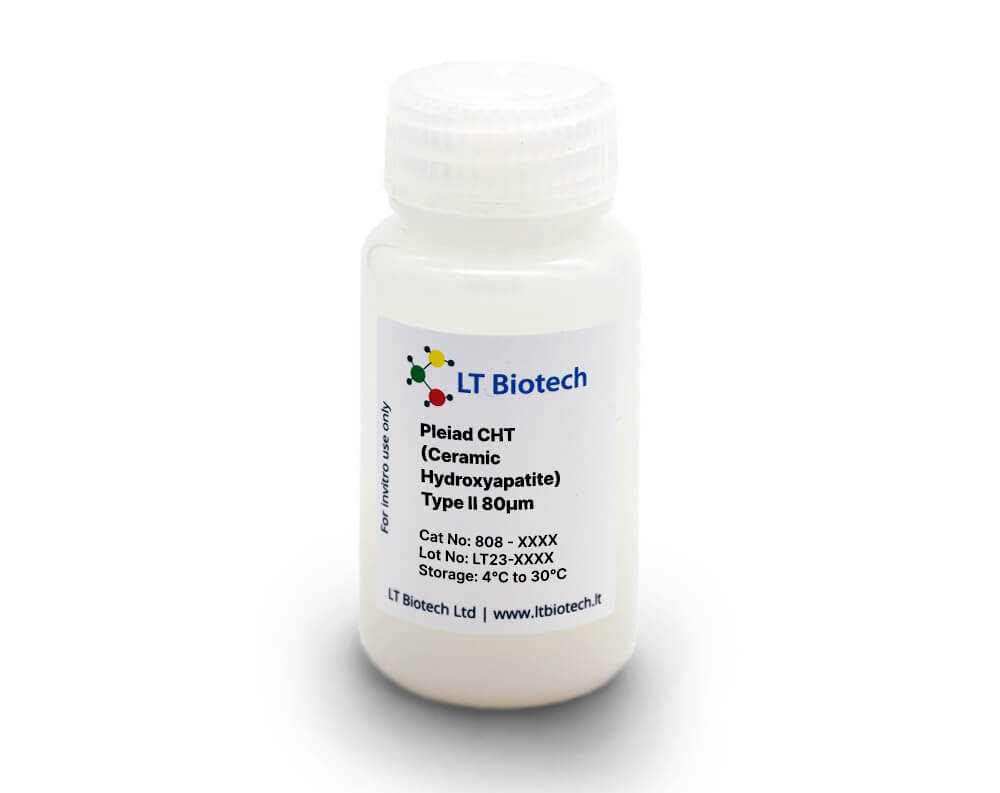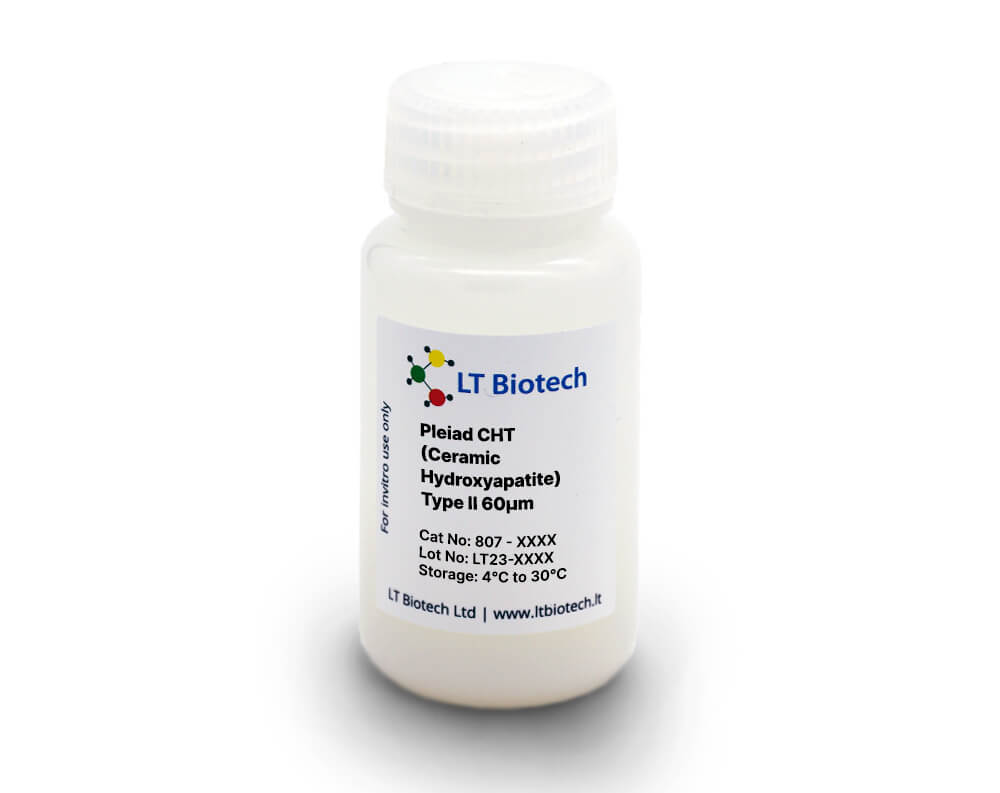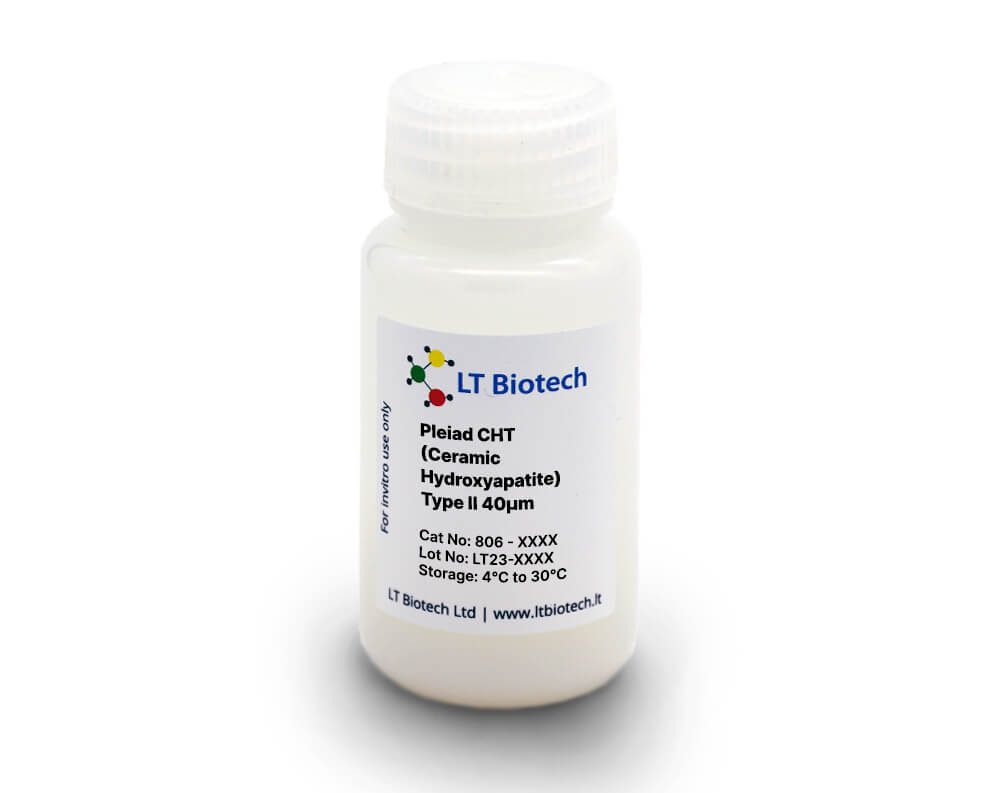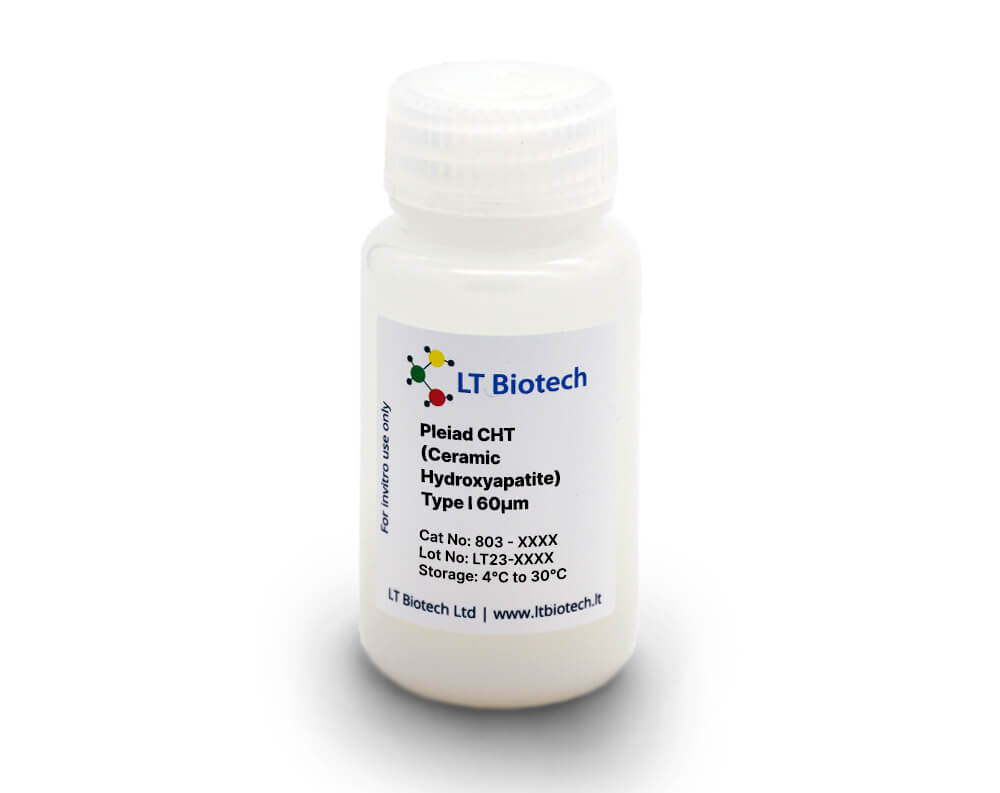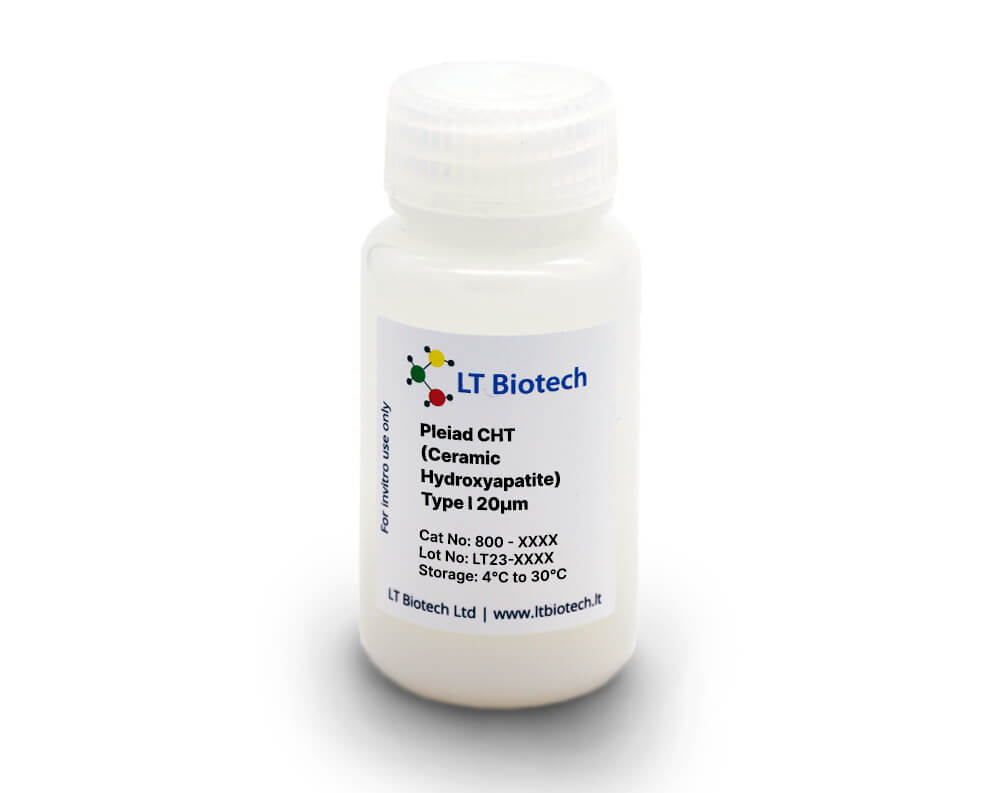Hydroxyapatite
Pleiad CHT (Ceramic Hydroxyapatite) Type II 80μm
No.
Add to order
Pleiad CHT (Ceramic Hydroxyapatite) Type II 60μm
No.
Add to order
Pleiad CHT (Ceramic Hydroxyapatite) Type II 40μm
No.
Add to order
Pleiad CHT (Ceramic Hydroxyapatite) Type II 20μm
No.
Add to order
Pleiad CHT (Ceramic Hydroxyapatite) Type I 80μm
No.
Add to order
Pleiad CHT (Ceramic Hydroxyapatite) Type I 60μm
No.
Add to order
Pleiad CHT (Ceramic Hydroxyapatite) Type I 40μm
No.
Add to order
Pleiad CHT (Ceramic Hydroxyapatite) Type I 20μm
No.
Add to order
Hydroxyapatite is made of calcium phosphate and is a naturally occurring mineral. It is routinely used as bone cement, in dentistry, and in biological implants. It is overall non-toxic and has an excellent biocompatibility profile. In laboratories, its main use is for the purification of enzymes, proteins, viruses, nucleic acids, plasmids, and other macromolecules, using hydroxyapatite chromatography resin.
Generally, hydroxyapatite for chromatography is used in the form of CHT: Ceramic Hydroxyapatite, instead of its ordinary crystalline structure. The properties of the hydroxyapatite resin in a chromatography column depend on how it was prepared. Depending on the sintering (liquefaction of a solid) temperature and size of the beads used in the column, it will be able to bind different sizes and types of particles or molecules. The sintering and creation of a ceramic form also radically increased the stability of the crystals and made possible the creation of durable low-cost hydroxyapatite chromatography resin.
A unique feature of hydroxyapatite is that in this form of chromatography, hydroxyapatite is both the ligand and the matrix of the column. The hydroxyapatite offers as binding sites both a positive calcium and a negative phosphate. The binding results from the combined effect of both binding groups.
The bounded proteins or other macromolecules can be progressively eluted through increasing concentrations of neutral salt (for example sodium chloride) or buffering salts (for example phosphate), as well as calcium ions.
Because the interactions of complex macromolecules with hydroxyapatite are rather complex at the molecular levels, this creates a variety of possible elution methods that will produce different purification profiles. This can be achieved by varying the order and nature of the successive elutions, by changing the absolute and relative concentrations of sodium chloride, calcium ions, and sodium phosphate.
The diversity of different hydroxyapatite columns, with distinct bead sizes and sintering temperatures, add to the versatility of this technique. Commonly, a mix of products, like for example all antibodies or all viruses, is obtained through this chromatography method, especially if the initial media is a complex solution.
Different standard protocols already exist for different macromolecules and can be optimized further.
Our experts can help you conceptualize and test the ideal way to use hydroxyapatite to achieve the desired purification, depending on the initial media content and the profile of the targeted molecules. Compared to other chromatography methods, CHT offers a lower price of material and elution solutions. This can make pure hydroxyapatite columns a cost-effective solution for your chromatographic purification needs.
Regeneration of the columns can be achieved with sodium phosphate solution, or eventually potassium phosphate. Calcium addition can eventually add to the column life depending on usage.
Sanitization can be achieved with sodium hydroxide.
Ceramic hydroxyapatite (CHT) – (Ca5(PO4)3OH)2 – is a form of calcium phosphate used in chromatographic separation. LT Biotech provides two types of CHT, Type I and Type II.
LT Biotech CHT can be supplied in 10 g, 25 g, 100 g, 1 kg and 5 kg packs. The catalogue number consists of eight digits, in the format XXX-ZZZZZ. XXX is the product code and ZZZZZ is the pack size in ml. For example, 800-00025 is a 25 gram pack of Pleiad CHT Type I 20 µm, and 806-50000 is a 5 kg tin of Pleiad CHT Type II 40 µm. For detailed information on pack types and quantities please contact your local distributor or refer to the product list.
